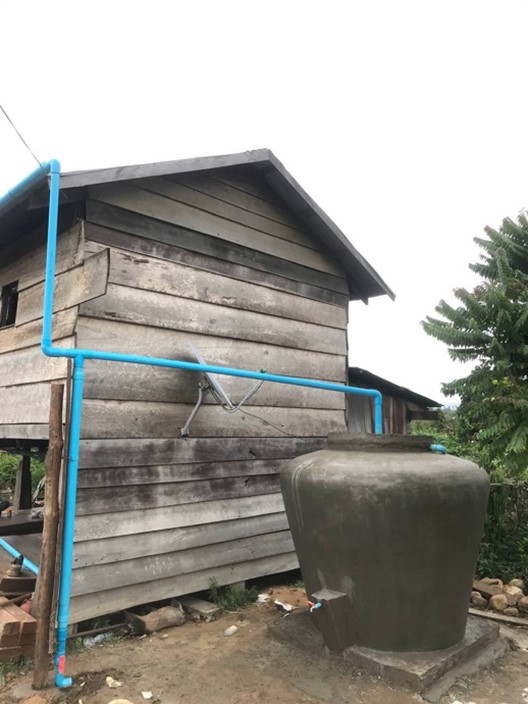
Above is an image photo of the project completion.
Please click here for the details of Darvish Yu Water Foundation:

1.Project title
“The Power of Rainwater” Supporting poor and most marginalized families access to safe drinking water in Stung Thmei village, Pramouy commune, Veal Veng district, Pursat province, Cambodia
2.Project site
Stung Thmei village, Pramouy commune, Veal Veng district, Pursat province, Cambodia
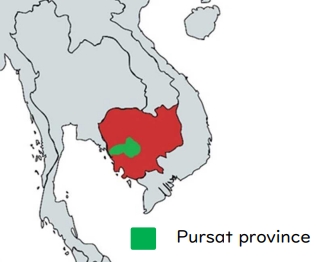
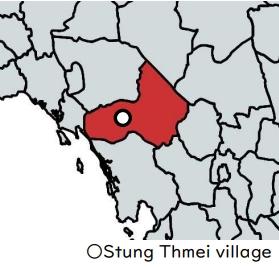
View of project site
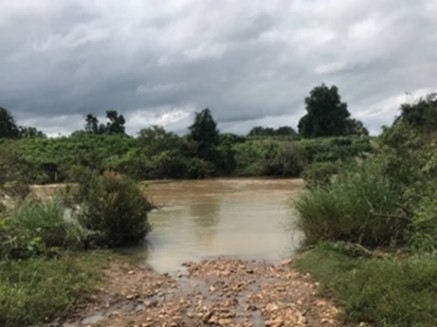
3.Project period
July 2024 to January 2025
4.Local partner
RainWater Cambodia(RWC)
Established in 2004 as an independent organization, and managed by a dynamic group of Cambodians, RWC is currently running various projects in six provinces and the capital city. Its main program deals with clean water, sanitation, and hygiene behavior change in schools, communities, and health care centers, including the establishment of rainwater harvesting.
Click here for details: https://rainwatercambodia-rwc.org/
5.Background of the 17th Darvish Yu Water Fund project
Stung Thmei village is a community-protected area located in Phnom Samkos wildlife sanctuary, which is near Central Cardamom Mountain national park, close to the Thai border in western Cambodia. The Pursat River flows through the village to Lake Tonle Sap, the largest freshwater lake in Southeast Asia. Veal Veng district, where the village is located, is a highland, containing the source of the Pursat River. Stung Thmei is one of ten villages in Pramouy commune, Veal Veng district, Pursat province. It is situated amidst mountains and forests, has 378 families and a total population of 1,516 people, of which 769 are female. There are 66 poor families and 38 very poor families. More than 90% of the population grows crops such as corn, beans, cassava, cashews, and oranges. The remaining 10% are civil servants, police officers, teachers, and workers.
The village is a community-protected area (CPA), where the community has the right to manage, conserve and utilize the benefits from forestry by-products and agro-forestry farming. It consists of 306 families, with 27 management committee members (including 3 women). About 80% of the village’s residents live along the main road (a national road with easy access), while the other 20% live 2 to 3 km off the main road, where access is difficult during the rainy season. The householders have relied on various sources of water, depending on where they are located. Our project focuses on the poorest and most marginalized families, particularly those located far from the main road.
6.Water problems at the target site
- Cambodia has made good progress towards meeting the Sustainable Development Goals; however, the poorest and most marginalized communities have missed out on access to basic services.
- A feasibility study by RWC in 2021 determined that more than 50% of the population in these communities are drinking unsafe water directly from rivers, ponds, and underground water sources. During the rainy season, people collect rainwater for daily use but in the dry season they must travel far to fetch water or purchase it from tanker trucks. Therefore, RWC intends to increase efforts in communities to establish rainwater harvesting with a risk-management system.
- In Stung Thmei village, there are alternative water sources, including shared pump wells, private ponds, and a major public water source, the Pursat river. However, the underground water contains high levels of iron sediment. The ponds and river have been contaminated by agricultural and chemical wastes flowing in from upstream during the rainy season.
- Numerous projects have already been carried out in order to increase access to safe drinking water in the village, but unfortunately not all of the poor and most marginalized, particularly those located far from main road, have benefited. An application has been made on behalf of the remaining households in need of support.
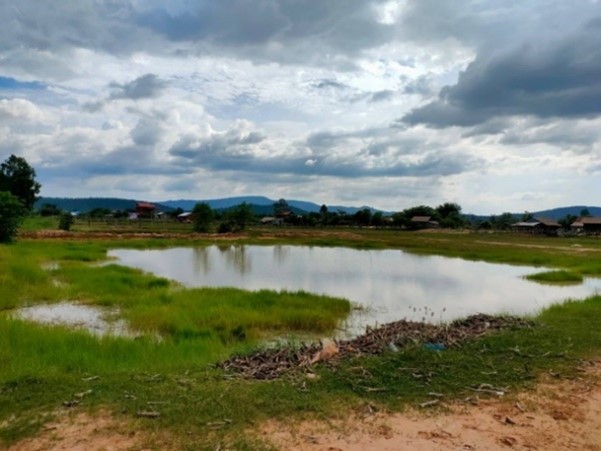
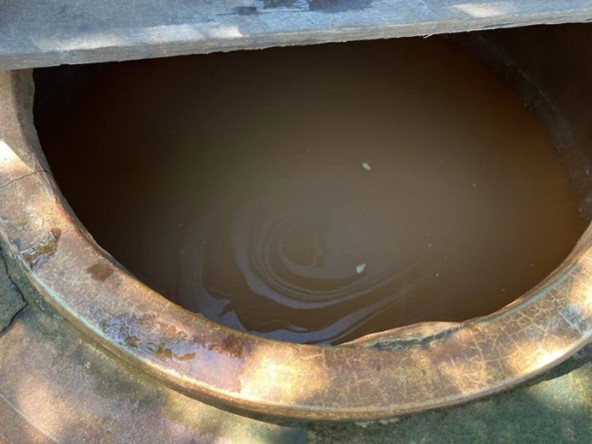
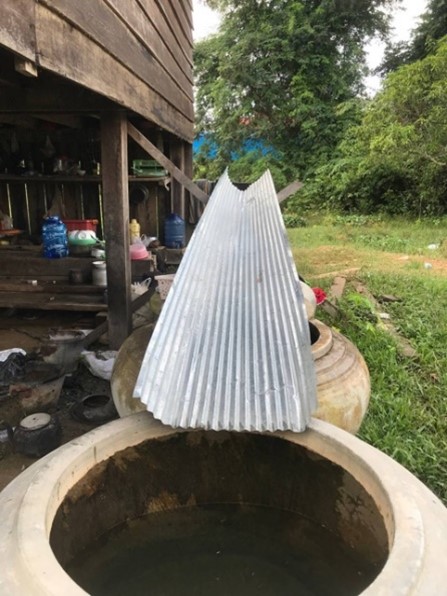
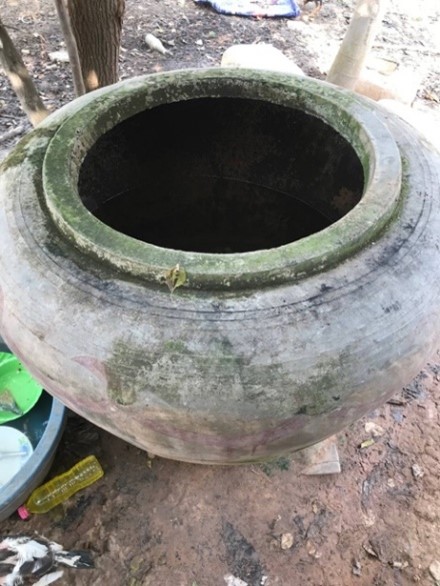
7.Project description
Rainwater harvesting is traditionally practiced throughout Cambodia; according to a JICA study in 2002 on groundwater development in central Cambodia in 303 villages, 87% of local inhabitants use rainwater. But due to an inability to secure an adequate quantity, they also use surface and underground water, which lacks hygiene controls. RainWater Cambodia (RWC) intends to introduce rainwater harvesting with a risk management system, designed to harvest the large rainfalls of the wet season and store enough water to last throughout the dry season using jumbo rainwater jars. Community activities will be supported, along with behavior change campaigns to improve water resource management and adaptation to droughts.
【Facilities】
- A selected 20 households are having risk-managed model rainwater harvesting systems installed. These households will be provided with risk-managed long-term storage 3000-litre jumbo jars, installed by local masons. The chlorination and water quality testing will be made to confirm safety for drinking.。
【Sessions】
- A one-day training session for 8 participants on the village’s water safety plan and construction of rainwater harvesting jars, focusing on a risk-managed model, so that not only direct but indirect beneficiary families can upgrade their water harvesting and safe storage systems in future.
- Operations and maintenance training on the 3000-litre jumbo-jar; a one-day day session for the 20 beneficiary households upon receiving their new rainwater harvesting systems.
- A water safety plan awareness-raising session for 50 representatives and 100 school children from the target village to increase knowledge on safe drinking water and to promote the rainwater harvesting plan.

8.Expected beneficiaries
250 beneficiaries
-Those receiving rainwater systems: 100 (20 households: 30 men, 35 women, 35 children)
-awareness session: 150 (15 men, 35 women, 100 school children)
9.Expected outcomes
- 20 households as direct beneficiaries, 30 men, 35 women and 35 children to receive direct support from the project through investment in-risk managed rainwater harvesting systems for provision of potable water. All households with new rainwater harvesting systems will receive training provided on operations and maintenance as a key to sustainability of the project.
- 8 local community members will receive training on a rainwater safety plan and construction of rainwater harvesting jars. This will promote efforts among other families to upgrade their traditional water harvesting and safe storage systems.
- A village session for about 150 participants (50 local habitants and 100 school children) on increasing awareness of water safety and rainwater harvesting plan. This session aims to educate and promote safe water practices and proper hygiene behaviors in order to enhance the overall health and well-being of the community and school children living the village.
- The project is also expected to affect indirect beneficiaries in the village: half of the 378 households or 189 families. Through key messages disseminated among the public and the influential effect of new facilities built in the village, the traditional rainwater harvesting facilities will hopefully be improved.
This project will contribute to progress towards achievement of the SDGs adopted by the UN in 2015, especially:
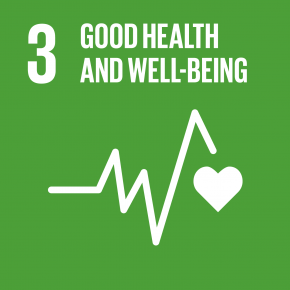
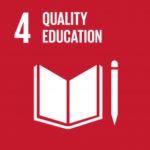
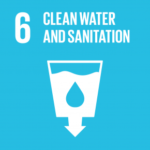
Darvish Yu Water Fund was established in 2007.
▼For more information about the Fund and its past projects, please visit the following website▼
https://www.waterforum.jp/en/what-we-do/darvish/
【Contact info】
Japan Water Forum
TEL: +81-(0)3-5645-8040 Fax: +81-(0)3-5645-8041
E-mail: office[at]waterforum.jp *Please change[at]to @
(Reported by Takejiro Suzuki, Project Manager)
